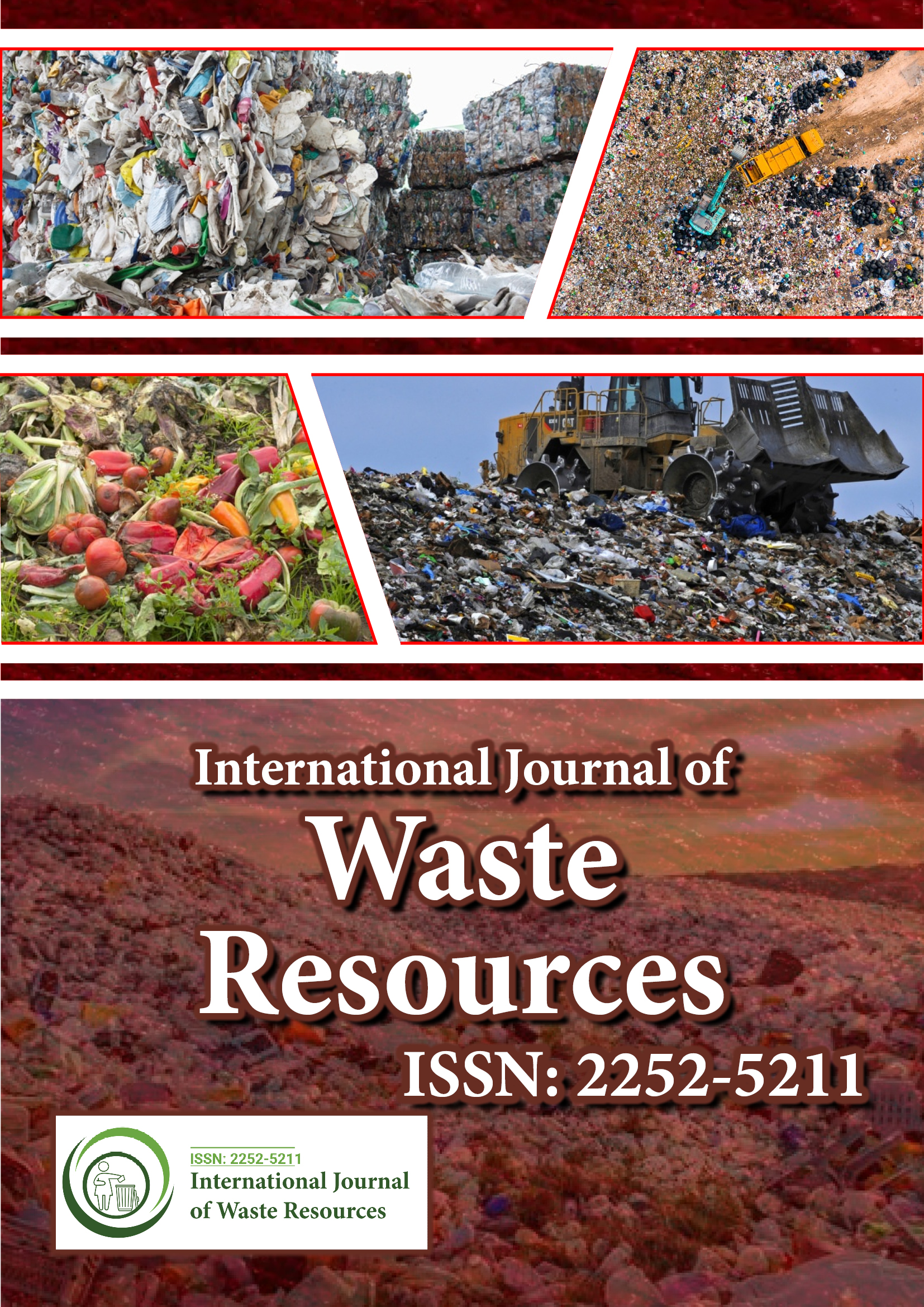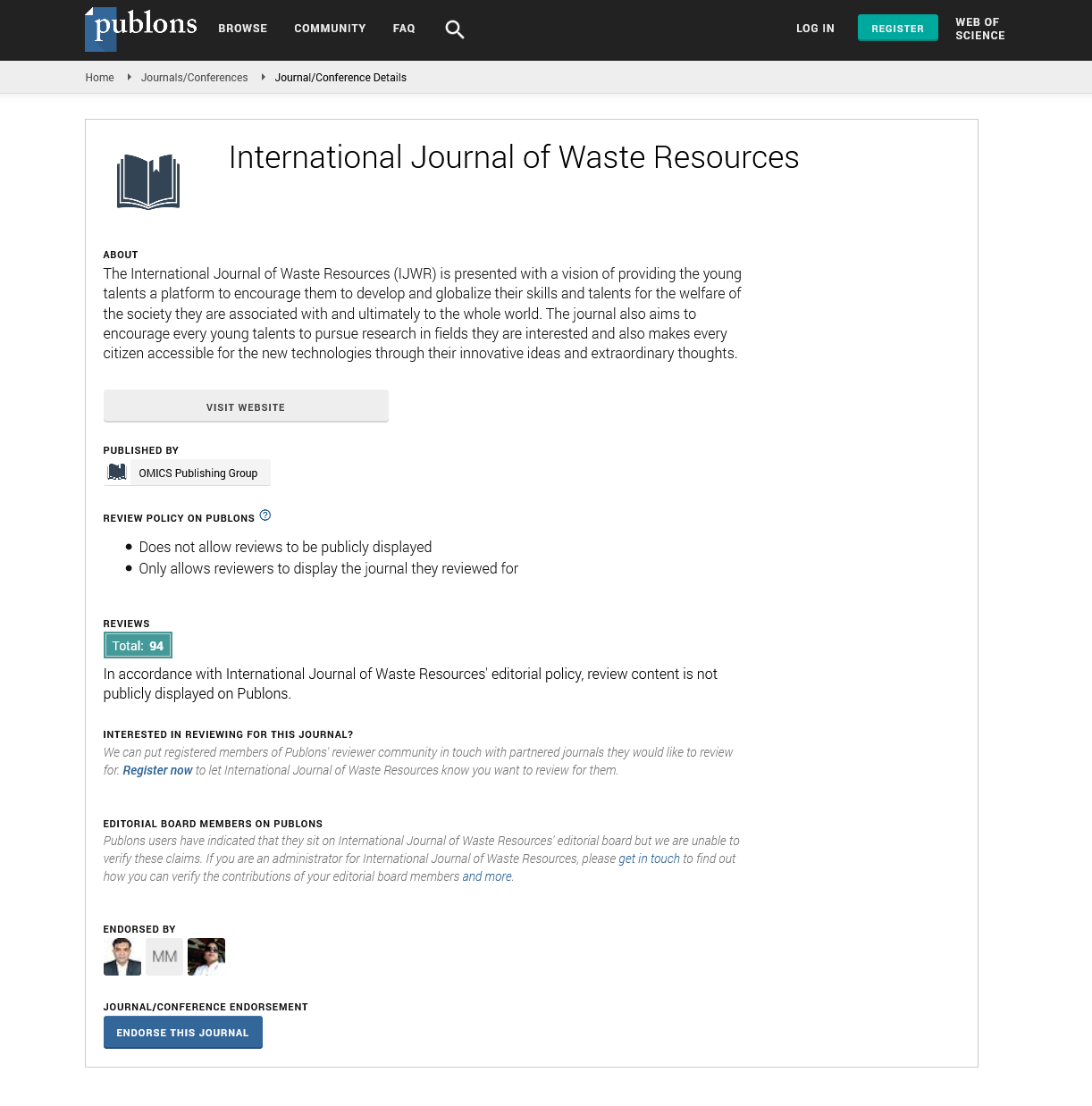Indexed In
- Open J Gate
- The Global Impact Factor (GIF)
- Open Archive Initiative
- VieSearch
- International Society of Universal Research in Sciences
- China National Knowledge Infrastructure (CNKI)
- CiteFactor
- Scimago
- Ulrich's Periodicals Directory
- Electronic Journals Library
- RefSeek
- Directory of Research Journal Indexing (DRJI)
- Hamdard University
- EBSCO A-Z
- Publons
- Google Scholar
Useful Links
Share This Page
Journal Flyer

Open Access Journals
- Agri and Aquaculture
- Biochemistry
- Bioinformatics & Systems Biology
- Business & Management
- Chemistry
- Clinical Sciences
- Engineering
- Food & Nutrition
- General Science
- Genetics & Molecular Biology
- Immunology & Microbiology
- Medical Sciences
- Neuroscience & Psychology
- Nursing & Health Care
- Pharmaceutical Sciences
Effectiveness of single and multi-species Iris pseudacorus and Echinodorus palaefolius within subsurface flow constructed wetland towards domestic waste water treatment
5th World Convention on Recycling and Waste Management
September 11- 12, 2017 Singapore
Mayang Christy Perdana
Gadjah Mada University, Indonesia
Posters & Accepted Abstracts: Int J Waste Resour
Abstract:
Domestic waste water which is not treated right will evoke many effects that threaten ecological function, both aquatic and terrestrial function. The aspects such as cost-effective and aesthetic presumably deliver to an inevitable consideration in innovating treatment which is applicable for community, anywhere and anytime. Subsurface Flow Constructed Wetland (SSFCW) is appraised to become an alternative solution for treating domestic waste water effectively and efficiently. The system which mimics the natural wetland concept, is able to degrade nutrients in waste water (in this case is grey water), therefore, it will be more feasible to be discharged to environment. Experimental study with vertical flow SSFCW was conducted, using four treatments, i.e., (1) control (without plant), (2) single species Iris pseudacorus, (3) single species Echinodorus palaefolius, and (4) multi species (combination between Iris pseudacorus and Echinodorus palaefolius). The application of those plants was aimed for holding a role in increasing waste water quality and adding aesthetic impression at once. The plants were planted on SSFCW media, in relatively same of weight and size to compare their effectiveness in decreasing organic load. The parameters measured pervade: Physical (TDS), chemical (pH, BOD5, COD, Nitrate, Phosphate) and biological (the plantsā?? endurance during and after the system worked), with the 3 days of retention time. The best COD reduction conducted by multi species (50.76%), BOD5 by single I. pseudacorus (30.15%), nitrate by single E. palaefolius (58.06%), phosphate by single E. palaefolius (99.5%) and TDS by E. palaefolius (3.25%). ANOVA showed that there was significant difference of nitrate and phosphate reduction between control and three other treatments, while pH parameter showed non-significant change among them.

